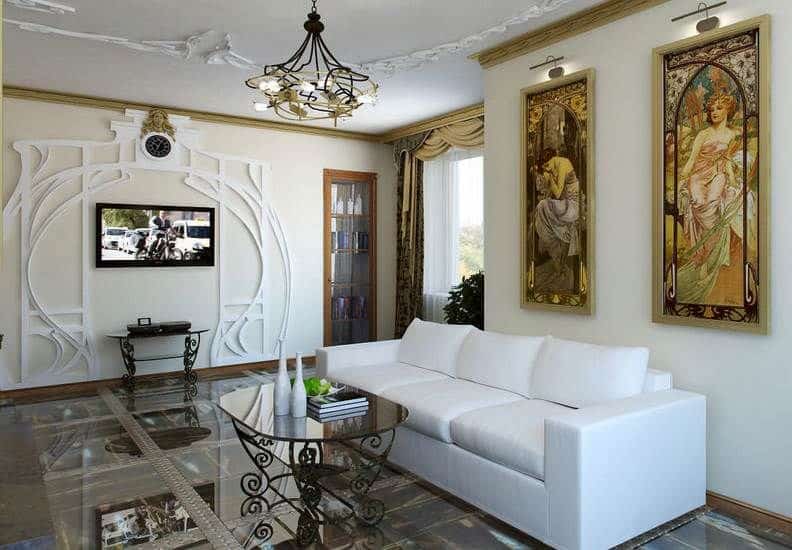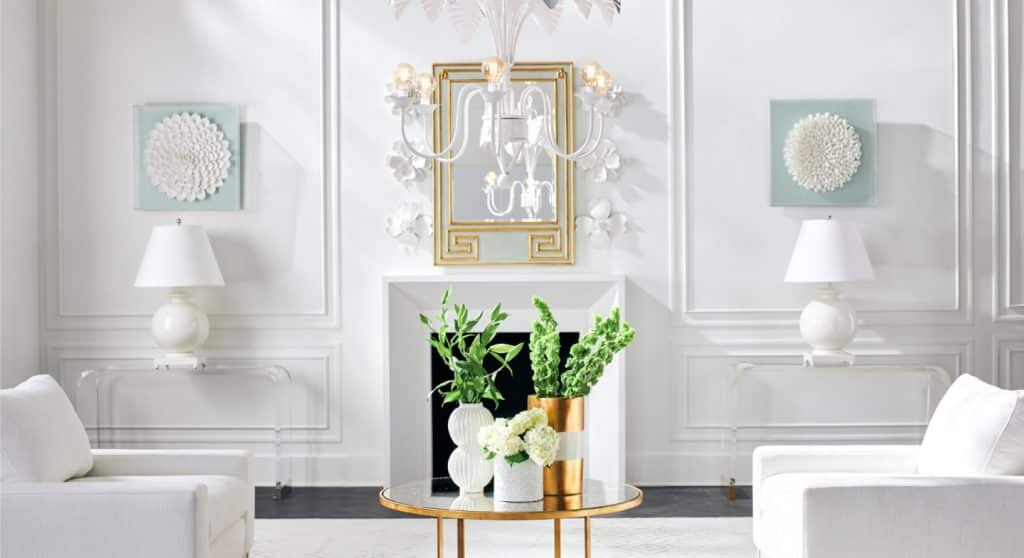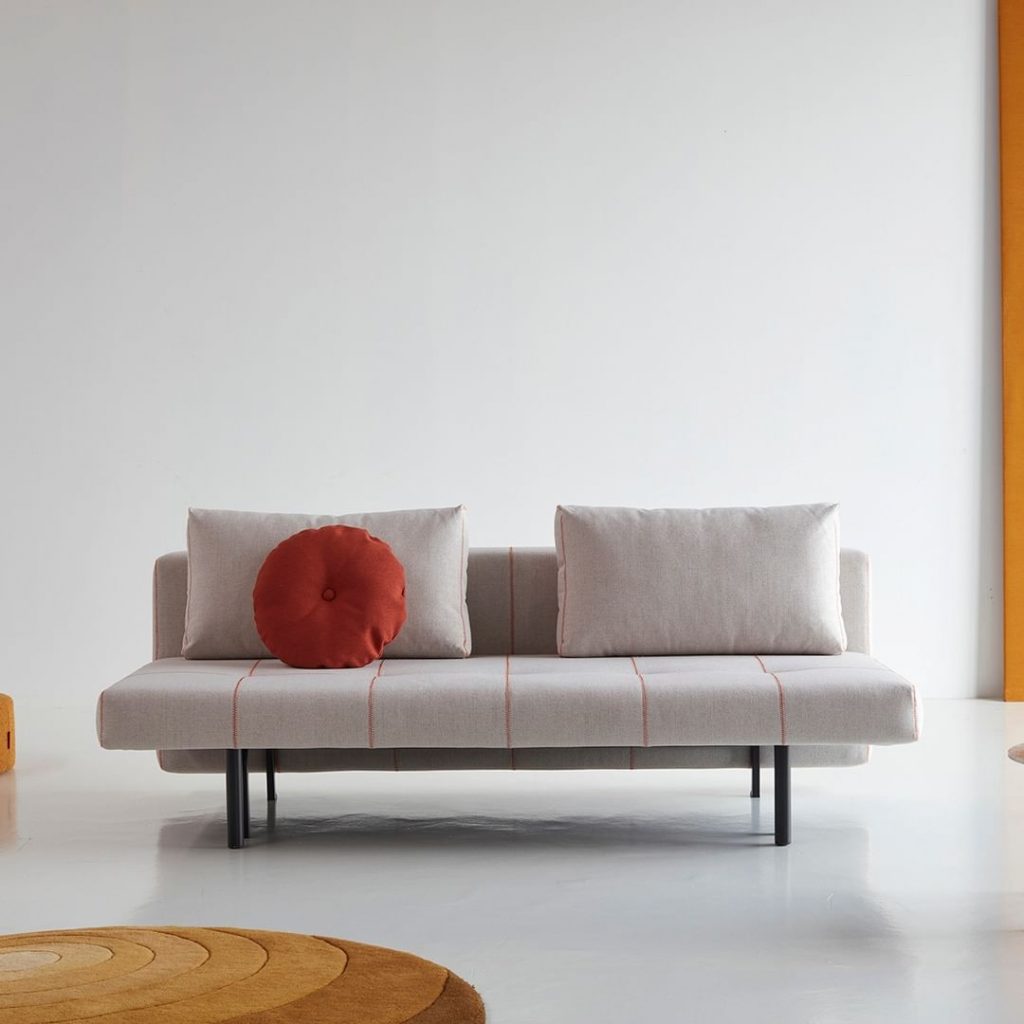“Modern” interior style is quite rightly considered noble, aristocratic and at the same time calm and cozy. Combining neutral shades, an abundance of natural materials with plant motifs and flowing shapes, this style direction allows you to create beautiful compositions with a pacifying and supportive atmosphere.
Also read these articles:
- Traditional and Modern Accessories for Industrial Interiors
- Traditional and Modern Accessories for “American” style Interiors
- Traditional and Modern Accessories for Gothic Interiors
- Traditional and Modern Accessories for Glamour Interiors
- Traditional and Modern Accessories for Loft Interiors
- Traditional and Modern Accessories for Bohemian Interiors
- Home interior styles
A feature of modern is a certain asymmetry and dynamism of the interior. The ideal balance is achieved thanks to the competent selection of decor elements for the room, which should correctly place accents and emphasize the sophistication of style. And in this article, we will tell you exactly what basic accessories are considered typical for interiors decorated in the “Modern” style.
Basic principles of creating a harmonious interior
When decorating your home in the Modern or Art Nouveau style, it is important to remember that it promotes the exclusion of strict geometric shapes and lines. Instead of angular silhouettes, it is ready to offer smooth contours, hinting at naturalness and natural origin. And this applies not only to basic interior items but also to decor.
Of course, a complete rejection of sharp corners in residential and office premises is impossible. Therefore, the minimum number of strict contours is perfectly acceptable.
When choosing elements and finishing materials for the future composition, you should also pay attention to their quality. The fact is that the words “cheap” and “budget” are by no means for modernity. That is why a competent approach to purchasing style accessories is very important.
Traditional interior details
The traditional details are considered to be the decor made of colored glass. It can be present not only in stained glass compositions. Colored glasses can be used in completely different interpretations – these can be:
- chandeliers, shades;
- vases;
- original souvenirs, figurines;
- screen doors, etc.
The tradition of using colored glass in modern interiors was born thanks to Louis Comfort Tiffany. A talented designer and creator of exquisite glass jewelry, he pioneered the use of them as decoration. Until now, his famous masterpieces adorn temples and museums, as well as collections of private house owners.
The tradition of using extravagant products of unusual shapes or with fancy designs is also welcomed in Art Nouveau. Such decorative details, exciting the mind with their curved silhouettes, may well become:
- figurines or lamps in the form of exotic animals;
- antique products, antiques;
- beautiful paintings in the corresponding artistic direction (they will ideally fit into the general entourage of paintings by Gustav Klimt, Egon Schiele, Alphonse Mucha, and others).
Natural motives
The creators of the Art Nouveau movement found inspiration and motivation in the forms of nature itself. Therefore, the graceful curves and flowing lines of Art Nouveau prefer more than angular silhouettes. Therefore, for interiors it is worth choosing accessories with elegant and delicate shapes that retain the message to fauna and flora, dynamism.
First of all, this applies to the living plants themselves. Climbing vines, flowers with beautiful foliage, and plants that resemble sculptures will fit very well into the atmosphere of the interior. Indoor irises, tulips, monstera, cacti of exotic varieties, dracaena, dieffenbachia, and many others will look great in such rooms.
Decorative items made from natural materials will also be quite appropriate. Fine ceramics and porcelain items of a “fluid” theme will perfectly fit into the compositions. For example, figurines of snails, dragonflies, frogs, figurines in the form of dolphins or fish, shell boxes, swan vases, jugs, and more.
Handmade jewelry made from natural materials will look no less harmonious in Art Nouveau interiors. For example, products from natural wood of noble species, natural stones, ceramics. These can be original photo frames or chic wood picture frames, panels, wall clocks, etc.
Forged products and elements
Thanks to the ability of metal to take any shape, Art Nouveau products made from it can also fit well into residential and commercial interiors. Despite the fact that the presence of forging is not at all a prerequisite for Art Nouveau, figures and individual fragments with ornate, curved shapes can ideally complement the overall picture.
Exquisite wrought iron hangers, figurines and coffee tables are perfect for decorating hallways and living rooms. Metallic elements with flowing outlines can be part of the railings that adorn the staircase.
When choosing accessories with forging elements, it is important to remember the main rule of Art Nouveau – the obligatory presence of exquisite flowing forms and romantic motives. In addition, do not overdo it with metal decor – every accessory in the interior should attract the eye, intrigue with its character.
Key motifs for textile decor
Textile elements help to create a real cozy atmosphere in the home. As basic textile accessories you can use:
- delicate white tulle in combination with massive curtains with a vegetable print, lambrequins;
- floor carpets with ornate and patterned patterns, floristic ornaments;
- decorative pillows made of soft cotton, linen, the most delicate silk, luxurious velvet and velveteen.
The preferred way of attaching curtains for Art Nouveau is on open cornices. It is desirable that the products have forged elements or imitate forging, and the tips are made in the form of asymmetric fragments with ornate shapes.
Style accessories and decor items – details that complete the image, make the whole interior picture complete. In modern style, unlike other styles, they may not carry a functional load, but they must necessarily fill the room with coziness.



